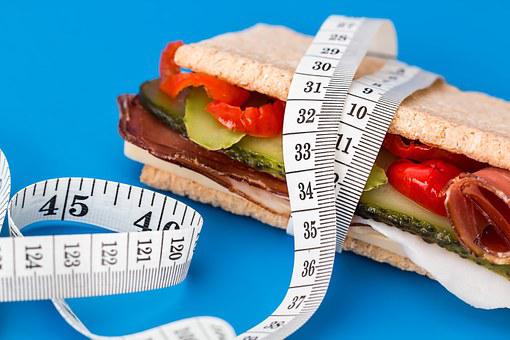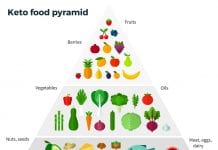Can You Lose Weight With Portion Control?
Obesity has become an epidemic, especially in the U.S.
Reasons for this problem vary but include poor eating habits and lack of exercise.
One of the easiest ways to start losing weight is to address portion control. 
People tend to “clean their plate” or eat everything that is in front of them even though they may not actually be hungry.
Therefore, monitoring serving sizes can help prevent overindulging.
Large portion sizes can predictably be found in restaurants, prepackaged meals, fast food, and processed foods.
Each is considerably larger than a person needs to feel full.
Not surprisingly, these are the foods and portions sizes that you really want to avoid in your quest to become healthy with low body fat.
When it comes to living a healthy lifestyle, portion control should be a primary priority.
Eating sensible amounts of food can actually help with the following:
- Weight Loss
- Digestion
- Decreasing Binge Eating
- Saving Money On Food Bills
- Glucose Level Balance
So How Does Portion Control Help Me Lose Weight?
Simply put, your body needs a specific number of calories each day to function.
These calories vary from person to person and depend on your age, weight at the time, and level of daily activity.
To maintain her weight, the normal woman needs about 2000 calories per day, and she needs about 1500 calories per day to lose one pound per week.
In contrast, a typical male needs about 2500 calories per day to maintain his weight and 2000 calories per day to shed one pound of weight per week.
Portion control can help. If you consume more calories than your body requires, it will convert them to fat for storage.
Your body will store more fat as you consume more calories. 
So, we may employ portion control to make sure we are consuming what our bodies actually require in order to limit the number of additional calories that are stored as fat.
We can essentially take control over how much of our food will be stored as fat by controlling how much food we actually put into our body.
We can also force our bodies to burn stored fat for energy by eating at a calorie deficit, which means eating less than what our bodies need each day to function.
This results in weight loss. Up to a point, the more body fat is burned, the more weight you lose, therefore we want to make sure we eat a good, balanced diet while exercising portion control.
How To Do Portion Control
So, you are ready to start eating less. But how do you actually DO portion control?
Let’s take a look at some simple tips:
Utilize Smaller Plates:
It is common sense that using smaller plates can help people eat less because they normally consume what is placed in front of them. Put less in front of you and the result is less calories consumed.
Drink Water Before A Meal:
Try drinking a large glass of water immediately before you consume a meal. This helps to make you feel full resulting in eating less during that meal.
Eat Slow:
Overeaters tend to eat very quickly. The result is that don’t realize that they are full as the stomach hasn’t had time to send a message to the brain yet.
A tip for those who struggle is to put down your fork or spoon between each bite and chew slowly.
Be Careful Eating Out:
When you’re dining out, ask the waiter to bring you a “to go” box and immediately remove half of your meal. This will help you overcome the temptation of eating too much.
Keep A Food Diary:
Making a list of everything you eat during the day will help you become more conscious of your portions and control them. But be prepared to be amazed and a little despondent at how many calories you are actually eating!
Use Portion Control Dishes:
You can decide to spend money on a set of portion-control plates, serving utensils, and drink glasses to help you achieve your weight loss objective. You can find an example here.
Utilize A Scale To Measure Food:
To better comprehend portion sizes, especially when you initially begin a weight loss plan, a digital scale can be helpful.
Check The Nutrition Labels:
This is a major step that will undoubtedly be helpful in helping you comprehend what is in your diet.
Reading the labels to understand serving sizes is crucial. However, this does not imply that we follow the serving size suggested on the label.
To determine how much of that food we should be eating, we instead use the labels. Consider your daily needs because not everyone needs the same serving size.
Prepping Meals:
Meal planning is one of things you will see serious bodybuilders and health nuts do. They usually prepare and store all meals for the week on Sunday.
It is beneficial to prepare and cook wholesome, balanced meals with complete control over food portions.
The better off you’ll be the more you can prepare in advance and make a well-balanced dinner work for you.
How To Calculate Portion Size
Sometimes you may get a price break on products in a larger quantity, but it doesn’t help your waistline if you don’t practice portion control! 
It also makes it difficult to realize and visualize what a portion size should be. So, try using the following:
- For meat – three to four ounces equals the size of a deck of cards.
- Your thumb is approximately one ounce (from base to the tip of it) or one tablespoon.
- For females, the palm of your hand equals roughly four ounces.
- For males, the palm of your hand equals roughly six to eight ounces.
- One cup is the approximate size of a tennis or baseball.
- A female’s fist is equal to approximately one cup.
- When you cup your hands – this is equal to approximately two ounces.
So, whenever you reach for something to eat, take a “visual” look at the portion amount and follow the above to keep your portions in check!
Consider purchasing foods (especially snack foods) in single servings instead of large or extra-large bags.
How To Eat Small Portions and Be Full?
It is natural to worry about being hungry when you began eating smaller portions.
Most “diets” that people try end up failing because no one likes to be hungry.
This is what you need to avoid.
My advice is not to jump in and shrink your meals down a couple of thousand calories. Start slowly and gradually shrink your meals and utilize the strategies listed on this page.
You may also want to try a 16-8 intermittent fast schedule. This shrinks down the times you can actually eat which also works to reduce the amount of food you eat.
Portion control can be a major part of your investment in a healthy lifestyle and general well being.
Portion management is a key component of the clean eating approach to managing the foods you eat, which can help you lose weight and keep it off.
You’ll hopefully discover how satisfying it is to be in charge of your food (as opposed to letting food control you) and conscious of what, how much, and when you’re eating.
Portion control could start changing your life today!
Good luck!
See more weight loss articles!
Citations:
- WebMD. “Portion Control and Weight Loss.” www.webmd.com, December 16, 2021. https://www.webmd.com/diet/control-portion-size.
- Mayo Clinic. “Slide Show: Portion Control for Weight Loss.” www.mayoclinic.org, November 14, 2020. https://www.mayoclinic.org/healthy-lifestyle/weight-loss/multimedia/portion-control/sls-20076148.
- The DASH Diet Plan - January 5, 2023
-
How To Do Portion Control For Weight Loss - June 30, 2022 - The Belly Fat Cure - November 13, 2021






















